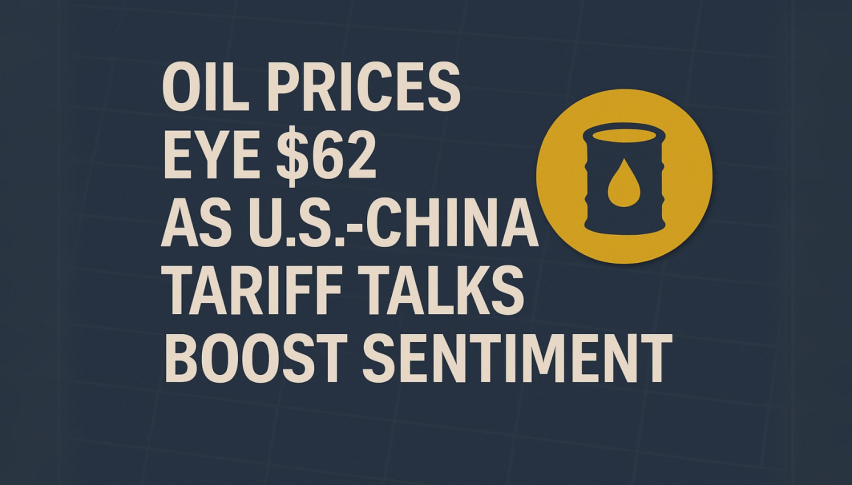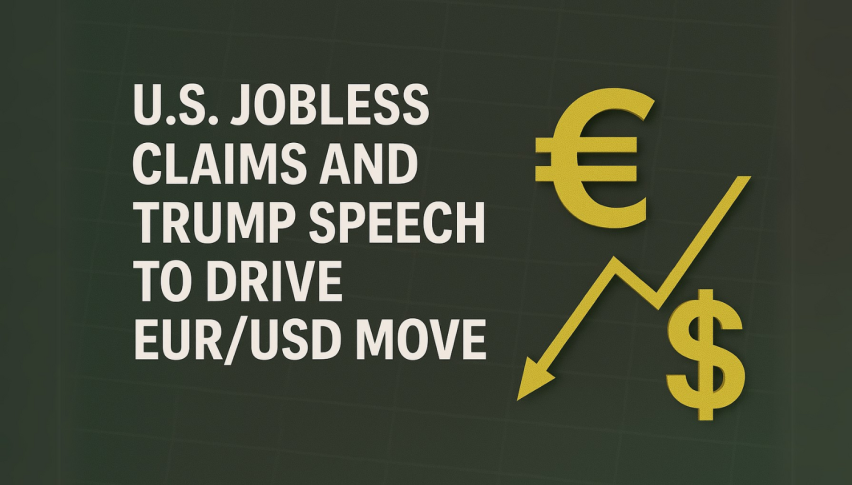Bullish Bias Underpins Crude Oil Prices – Risk on Sentiment in Play!
The [[WTI]] crude oil is supported but it failed to extend its previous day bullish rally and stay depressed around 41.40 level as the next
WTI Crude Oil is supported, but it failed to extend its bullish rally of the previous day, remaining depressed at around the 41.40 level, as the next wave of lockdowns throughout the world is threatening to undermine the crude oil demand yet again, which is keeping the crude oil prices under pressure. Let me remind you that the crude oil prices recovered earlier in the week, after Pfizer announced that it had achieved a 92% success rate in its trial for a COVID-19 vaccine. The oil prices improved even further when OPEC member Algeria hinted that OPEC+ could deepen the group’s production cuts come January.
Despite this, the gains in the crude oil prices were temporary or short-lived, amid mixed signals concerning the coronavirus (COVID-19) and the US election results, not to forget OPEC’s demand outlook. Apart from this, the heavy losses in crude oil prices could also be attributed to the latest reports suggesting that OPEC’s oil output for October rose by 320,000 BPD, in the wake of the resumption in Libya’s production. Meanwhile, the strength of the broad-based US. dollar, backed by the mixed market sentiment, is also playing a major role in undermining the crude oil prices, as the price of oil is inversely related to the price of the US dollar.
But the losses in crude were capped by the prevalent hopes of further stimulus and a coronavirus vaccine, which somewhat revived hopes for a steady rebound in the global energy demand. At the moment, crude oil is trading at $ 41.47 and consolidating in the range between 41.39 and 41.67.
Talking about negatives, the concerns over the second wave of the coronavirus and fears of renewed lockdown measures throughout the world are continuously threatening the recovery of the crude oil demand. It should be noted that the coronavirus (COVID-19) is taking a significant toll on the US. As per the latest report, the country keeps reporting record cases daily, to the tune of more than 100K per day. Essentially all American states are delivering constantly wosening COVID-19 status reports as well as record numbers of hospitalizations and daily cases exceeding 100,000 in the last few days. As a result, New York has declared a 10 p.m. curfew on bars, gyms and restaurants, in an effort to curb the spread. It is worth mentioning that the COVID-19 hospitalizations in the US are currently in excess of 60,000.
In addition to the US, Europe also imposed lockdowns again last week, which puts further pressure on the oil demand. As per the latest report, Sweden has declared a partial lockdown, shutting down bars and restaurants for the first time since the virus started. Thus, the back to back lockdown restrictions will have an instant negative effect on transportation fuel, as more people will stay home in the evening hours.
Besides the virus woes, the reason for the bearish crude oil prices could also be associated with the long-lasting US-China tussle, which is continuously picking up pace. On the flip side, the resumption of Libyan oil production keeps fueling the oversupply worries, which also played a major role in undermining the crude oil prices. It was also repoted that OPEC’s oil output for October rose by 320,000 BPD.
Apart from this, the declines in the crude oil prices were further bolstered after OPEC lowered its forecast for a growth in the global oil demand, to 6.25 million barrels per day (BPD) for 2021 from 7 million BPD in the July report. OPEC added that the crude oil demand is expected to be seriously hampered in terms of transportation.
However, the market trading sentiment has been flashing mixed signals since the day started. As a result, mixed trading could be attributed to the mixed signals concerning the coronavirus (COVID-19), and the global monetary policy moves, not to forget the US election results. It should be noted that the leading vaccine producers like Pfizer and Moderna are fighting constantly to find the best cure for the deadly virus. The rumors surrounding the US stimulus and a further improvement in the US-Japan relations under the Democratic leadership has also helped to limit the losses in terms of the the market trading sentiment.
As a result, the broad-based US dollar failed to extend its overnight gaining streak and came under some selling pressure on the day, amid a prevalent risk-on market sentiment. Moreover, the losses in the greenback could also be associated with the rising COVID-19 infection rates in the US and Europe, which keep fueling doubts over the economic recovery in the US . However, the losses in the US dollar have become a key factor that has helped to limit the losses in the crude oil prices. This pushed the oil prices higher, as the price of oil is inversely related to the price of the US dollar. Meanwhile, the US Dollar Index, which tracks the greenback against a bucket of other currencies, dropped to 92.922.
.
On the bullish side, the losses in the crude oil prices were further capped when OPEC member Algeria hinted that OPEC+ could deepen the group’s production cuts come January. It should be noted that Algerian Energy Minister Mohamed Arab said, on the previous day, that OPEC+ was likely to extend oil production cuts into 2021, or deepen them, depending on market conditions. These positive comments helped to limit depper losses in oil.
- Check out our free forex signals
- Follow the top economic events on FX Leaders economic calendar
- Trade better, discover more Forex Trading Strategies
- Open a FREE Trading Account



